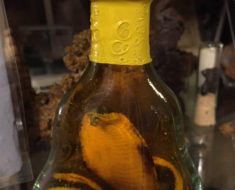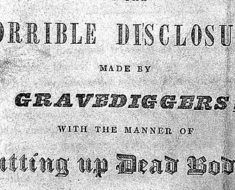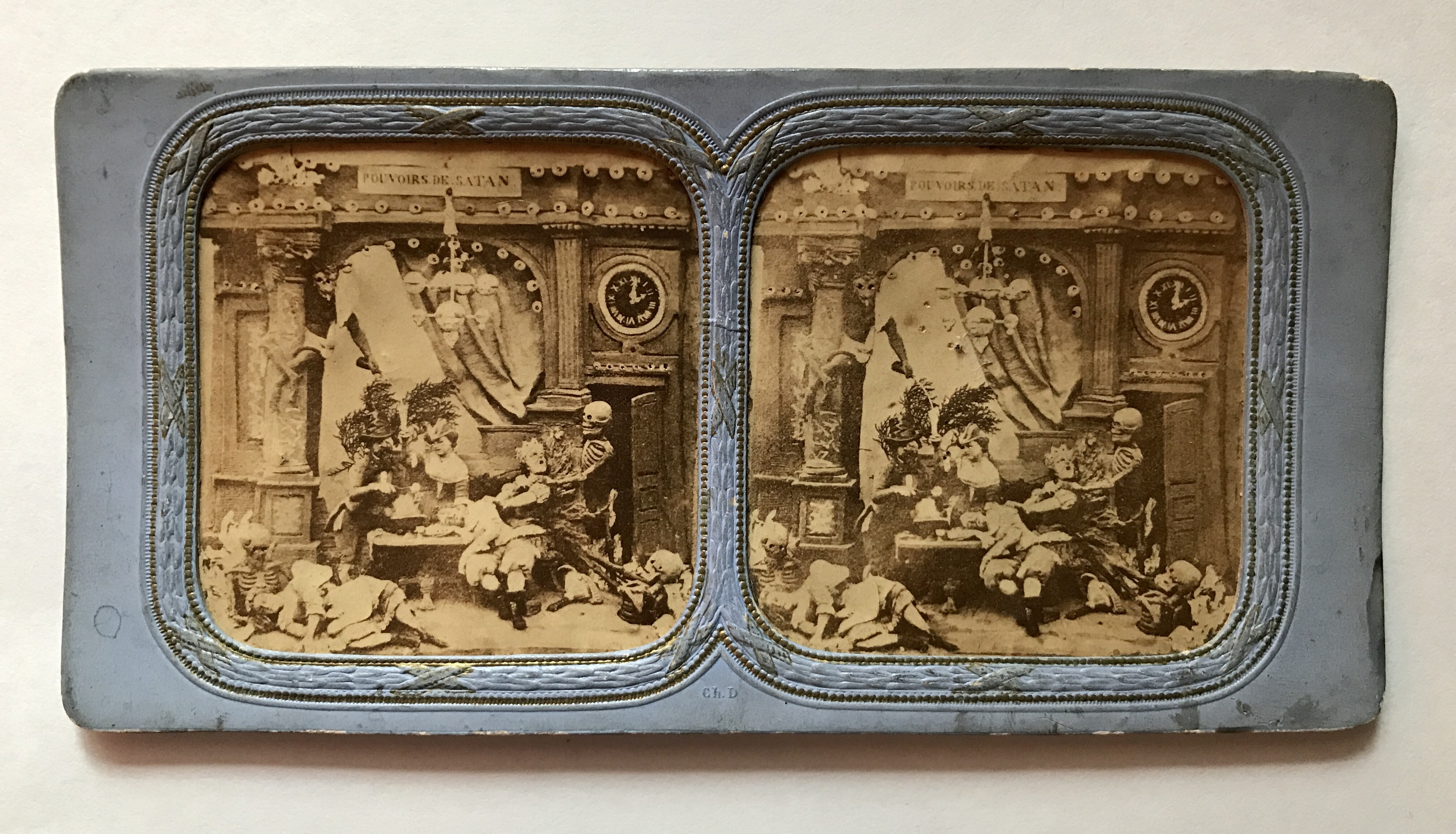
Les Diableries: Pouvoirs De Satan (Satan’s Powers). Hartzman Collection.
France first gave the world a peek into Hell during the Reign of Terror toward the end of the 18th century. By the 1860s, French artists gave us another glimpse into the netherworld through a series of stereoscopic scenes called Les Diableries (or, Devilments).
The cards were created by Louis Alfred Habert, Pierre Adolph Hennetier, and Louis Edmond Cougny. Each devilish diorama scene features meticulously sculpted clay figures of Satan, demons, skeletons, and other macabre creatures, often reveling and frolicking in Hell.
Unlike most stereoview cards, these are not just stereoscopic photographs. Les Diableries are known as French Tissues, because they’re crafted with delicate sheets of tissue paper. This means that in addition to the normal monochromatic view, one can hold the viewer up to a light and see hand-colored scenes, including glowing red eyes in the devils and skeletons, lit chandeliers, and more.

The book includes a viewer so you can see all the images in perfect 3D. (The London Stereoscopic Company)
So why were these three sculptors obsessed with the devil? Well, everyone was. Satan and his dominion were ingrained into the religious culture—and had been for hundreds of years. As explained in the book, Diableries: Stereoscopic Adventures In Hell, by Brian May, Dennis Pellerin, and Paula Fleming, devils were featured in Mystery Plays performed near churches for illiterate audiences in the Middle Ages.
“It must be remembered that in Catholic France of the time, the Devil was a mighty weapon used by the Church, not only to keep people on the right path, but also to maintain their influence and power,” the authors write. “… Representations of Hell complete with horrible and vicious demons were sculpted or painted both outside and inside churches, and sermons would often mention the torments inflicted upon the damned. For centuries very little changed, and the Devil kept frightening old and young people alike.”
May, who first discovered the series at London’s Portabello Market in the late 1960s, explains that the cards represent more than entertainment. “Beneath the innocent façade of child-like stories lies an undercurrent of social comment, topical allusion, humour, and, in many cases, seditious satire—which was so dangerous in the repressive regime in which they were made, that it rendered their creators liable to be arrested and incarcerated.”
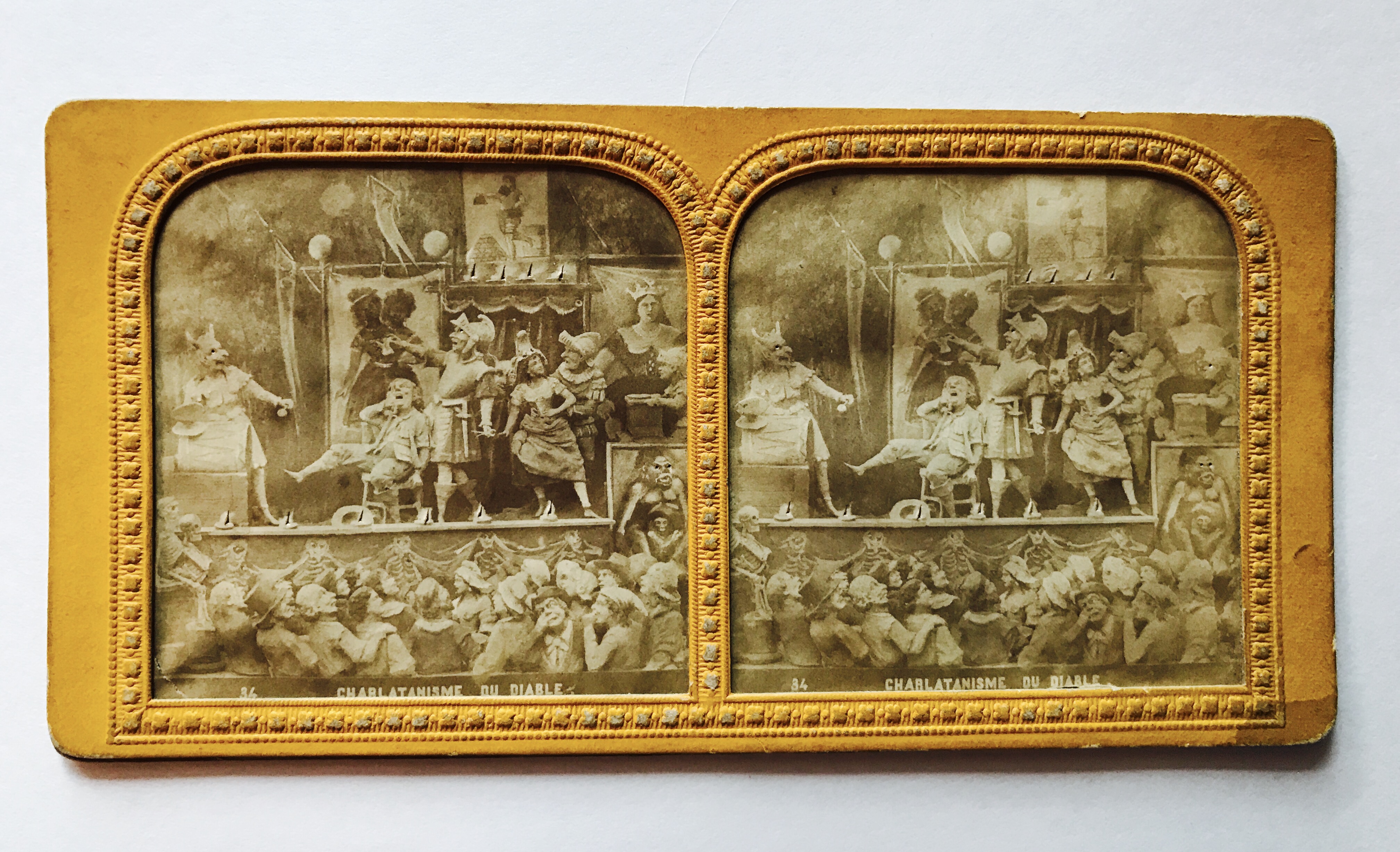
Les Diableries: Charlatanisme Du Diable (The Devil’s Quackery). Hartzman Collection.
See more Diableries in the video below. For more on Brian May, you can always hear him playing lead guitar in Queen. And explore the spirit world in 3D here, on WeirdHistorian.com.

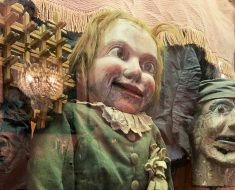
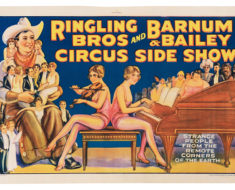
![Charlie Chaplin's grave. By Giramondo1 from Vila Isabel, Brasil (Charlie Chaplin, R.I.P.Uploaded by Manoillon) [CC BY 2.0 (https://creativecommons.org/licenses/by/2.0)], via Wikimedia Commons](https://www.weirdhistorian.com/wp-content/uploads/2018/04/Charlie_Chaplin_grave-crop-235x190.jpg)

